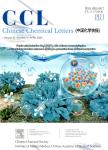Engineering FeS_(2) nanoparticles on tubular g-C_(3)N_(4) for photo-Fenton treatment of paint wastewater
Engineering FeS2 nanoparticles on tubular g-C3N4 for photo-Fenton treatment of paint wastewater作者机构:Key Laboratory of Synthetic and Biological ColloidsMinistry of EducationInternational Joint Research Center for Photoresponsive Molecules and MaterialsSchool of Chemical&Material EngineeringJiangnan UniversityWuxi 214122China
出 版 物:《Chinese Chemical Letters》 (中国化学快报(英文版))
年 卷 期:2022年第33卷第6期
页 面:3073-3077页
核心收录:
学科分类:083002[工学-环境工程] 0830[工学-环境科学与工程(可授工学、理学、农学学位)] 081705[工学-工业催化] 07[理学] 070205[理学-凝聚态物理] 08[工学] 0817[工学-化学工程与技术] 080501[工学-材料物理与化学] 0805[工学-材料科学与工程(可授工学、理学学位)] 0702[理学-物理学]
基 金:the Natural National Science Foundation of China(No.51973083) National First-Class Discipline Program of Food Science and Technology(No.JUFSTR20180301) China Postdoctoral Science Foundation(No.2019M651688) Fundamental Research Funds for the Central Universities(No.JUSRP22027)
主 题:Photo-Fenton catalysts FeS_(2)nanoparticles Hollow tubular g-C_(3)N_(4) Heterojunction Reactive oxygen species Paint wastewater degradation
摘 要:An efficient photo-Fenton catalyst(Fe S_(2)@HTCN)was designed by maximizing the synergistic effect of Fe S_(2)nanoparticles and hollow tubular g-C_(3)N_(4)(HTCN).Molecule self-assembly and molten salts-assisted calcination were used to engineering the hollow structured g-C_(3)N_(4)before anchoring Fe S_(2)nanoparticles on the walls of HTCN via reflux *** to bulk g-C_(3)N_(4),the unique structure of HTCN and heterojunction in the composite endowed FeS_(2)@HTCN with more active sites and abundant channels for electron transfer and charge *** enriched electrons can improve the Fe^(3+) recycling and boost Fe^(2+) catalyzed ^(·)OH production via H_(2)O_(2).As-prepared photo-Fenton catalyst was successfully applied to the treatment of industrial paint *** paint wastewater with its COD as high as 8200 mg/L can be effectively degraded with 0.2 mol/L H_(2)O_(2)in 90 min under visible light *** photoFenton system was further evaluated according to the process stability and economic benefit,proving that the strategy presented in this work would be applicable to the treatment of real wastewater.



